Before walking the Tour de Mont Blanc, I hadn’t given much thought to the possibilities of altitude sickness. Together with my friend Julia, I walked this long distance hiking trail over four years, each year walking a few more days, until our circuit was complete.
On Day 5 of the walk, one of the highest legs, my friend felt quite ill with dizziness and fatigue. It was only due to the kindness of strangers that we made it to our end point by nightfall – you can read the full story here.
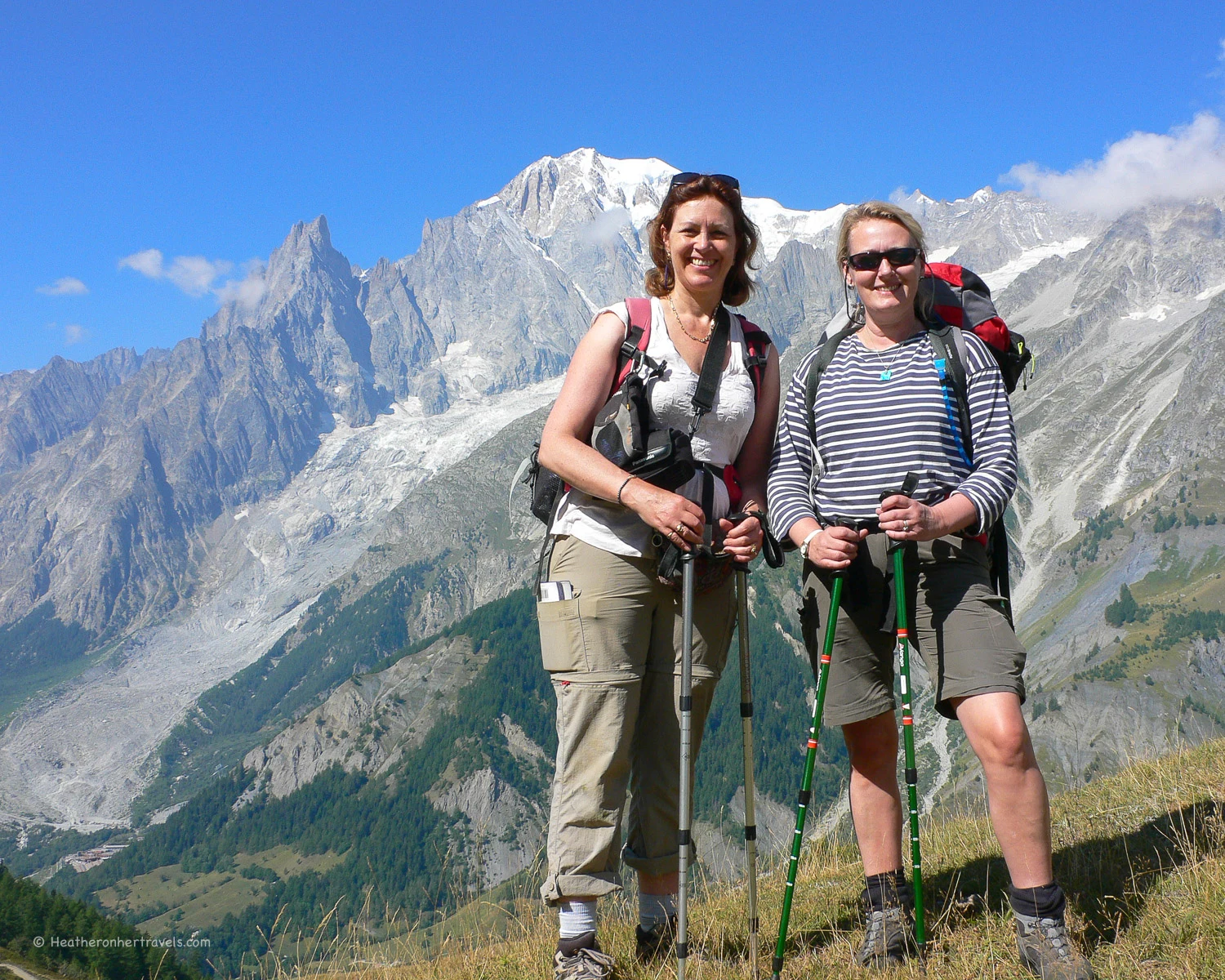
We realised later, that Julia had been suffering badly from altitude sickness, also known as Altitude Mountain Sickness or AMS. Determined to have a better experience the following year, Julia researched the condition and sought medical help.
It meant that when we returned the next year she was well prepared and was back to her normal fit self. In fact she forged ahead of me on the path, where previously year had been lagging behind. Here’s Julia’s advice on AMS and how to avoid it.
This article may contain affiliate links that provide commission on purchases you make at no extra cost to you. As an Amazon Associate I earn from qualifying purchases.
The causes of Altitude Sickness / AMS
In retrospect it’s obvious why Julia was so badly affected by AMS on one particular section of the walk. We arrived in Chamonix at 1100M and the next day took the cable car up the mountain to 1875M at Flegere.
Then, we proceeded to walk up to 2100 M in difficult terrain. The path descended to the valley at Tre-le-champs 1400M. However, it then took us up again over the Aiguillette du Possette at 2200M. We experienced large variations in altitude, combined with extremely strenuous walking.
The Symptoms of Altitude Sickness / AMS
Julia learned later that she was suffering from Ataxia, where you experience a loss of strength on your muscles. She described it as like walking on jelly and feeling that her legs would give way at any moment.
The feeling was quite frightening, especially walking down hill with a rucksack. Combined with this was a feeling of extreme fatigue, being faint and dizzy with a feeling of heaviness.
At one point on our descent Julia felt that she might not make it down to the cafe at the bottom of the valley without fainting. The only common symptom of Ataxia that Julia didn’t seem to suffer from was a headache.
While we were walking together, I was aware that Julia was struggling, but not quite how bad she was feeling. In retrospect I should have stayed beside her or offered to carry some of her baggage.
The treatment for Altitude sickness
After that year’s walk, Julia researched her symptoms on the Internet and was sure that she was suffering from AMS. Having experienced this some years before in the Canadian Rockies, she sought medical advice from the nurse at a specialist travel clinic.
She was given information leaflet about the drug Dimoxyl, which Julia was able to purchase through private prescription from her doctor.
Julia’s reading also told her that dehydration is a big contributing factor in AMS. This was combined with the fact that she had not always been wearing a sunhat. Also, she was only using one rather than two walking poles to support her legs.
To address the hydration issues, Julia purchased a clear plastic water-pouch with a tube. She was able to put this in her rucksack, and take regular sips of water as she walked which she found really helped. It also helped to regulate her breathing, by taking deep breaths and then breathing out fully, to avoid a buildup of Carbon Dioxide.
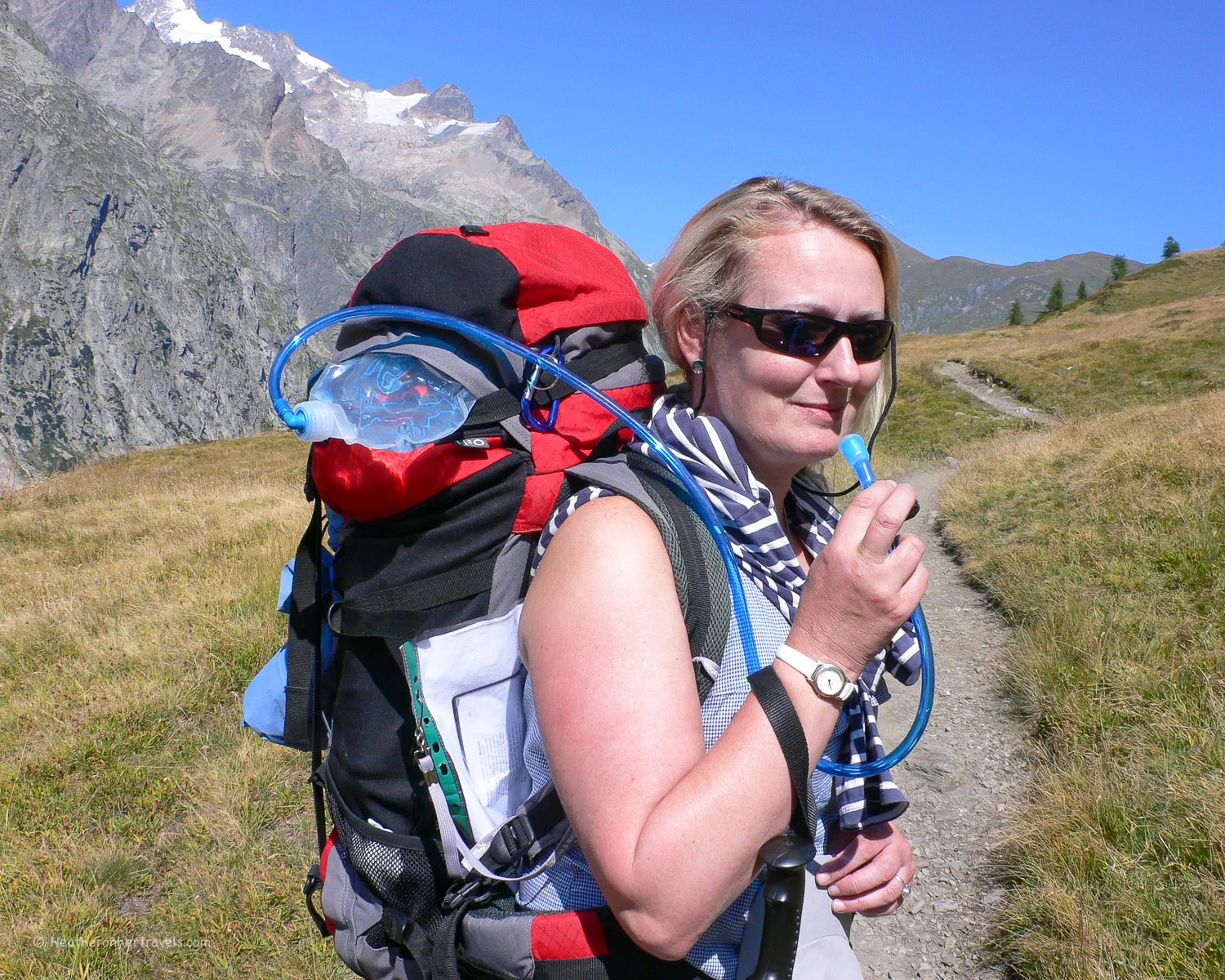
Other health hazards on the Tour de Mont Blanc
Another hazard of walking a mountain trail, like the Tour de Mont Blanc, is the strains on your legs and knees. For the first two years that I walked on the Tour de Mont Blanc I had no problems at all with my legs and knees.
This third year one of my knees had was giving me a problem with an inflamed cartilage. My physiotherapist prescribed some anti-inflammatory medication. Initially this was the strongest version of Ibuprofen that you can get over the counter in the UK.
When that didn’t seem to be improving things I had a slightly stronger anti-inflammatory drug, available on prescription only. Although these helped calm down the inflammation and discomfort, I was still wary of putting my knee under any major strain, while walking on mountain terrain.
As an extra precaution, I continued to take Ibuprofen while we were on the walk, to dampen down inflammation. I also wore a neoprene knee support that you can buy at pharmacies, which helped to keep my knee warm and supported.
Walking poles for long distance hiking
Walking poles are essential on the Tour de Mont Blanc and even more essential if you have any knee problems. They give tremendous support to the knees and legs. They’ll help you to keep your balance on slippery, muddy and steep paths to prevent any twists and strains. Read about using my Leki walking poles on the Tour de Mont Blanc.
Obviously if you are having joint problems, you should seek medical advice as your condition may be different to mine. I would recommend keeping some over-the-counter ibuprofen or a similar medication in your medical kit, as it is an anti-inflammatory as well as a pain killer.
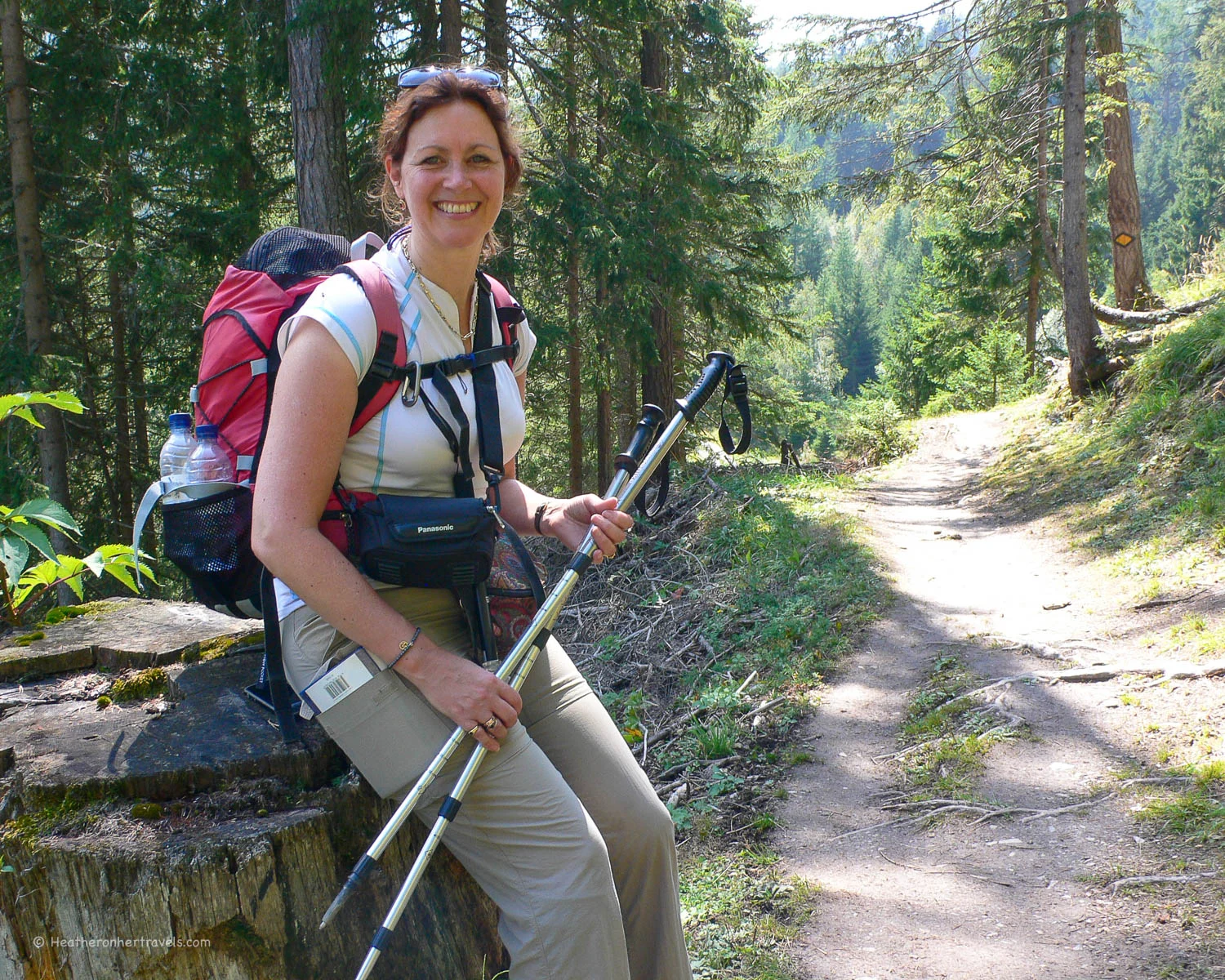
What was in our medical kit?
Hearing about the fitness problems we suffered you may be surprised to hear that we both travelled with a very small medical kit. Mine was all contained in a clear plastic pencil case that I borrowed from my son.
The key thing is that the Tour de Mont Blanc is a popular trail. While you can get to some wild or remote places, there are normally other walkers on the trail. You are never more than a day’s walk down to the valley where you can get medical attention if you need it.
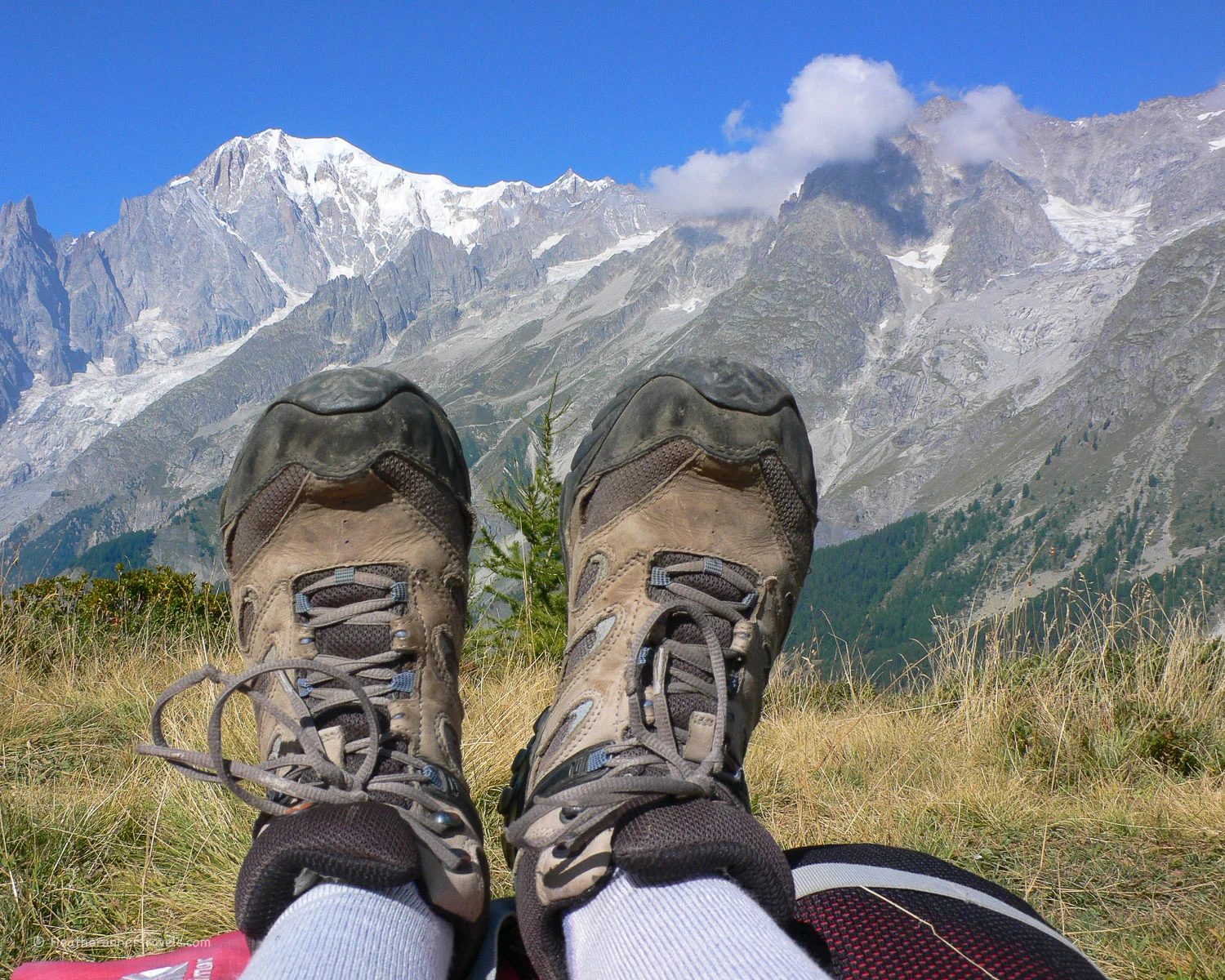
With this in mind, the things in our medical kit were designed to alleviate minor ailments and discomfort, the sort of things that could spoil your holiday. Between us we were carrying;
- Antiseptic cream and wipes
- plasters for blisters
- nasal spray for blocked noses
- lip sore cream for cold sores
- antibiotic eye ointment
- athletes foot cream
- a general antibiotic and diarrhea treatment (the strongest available over the counter)
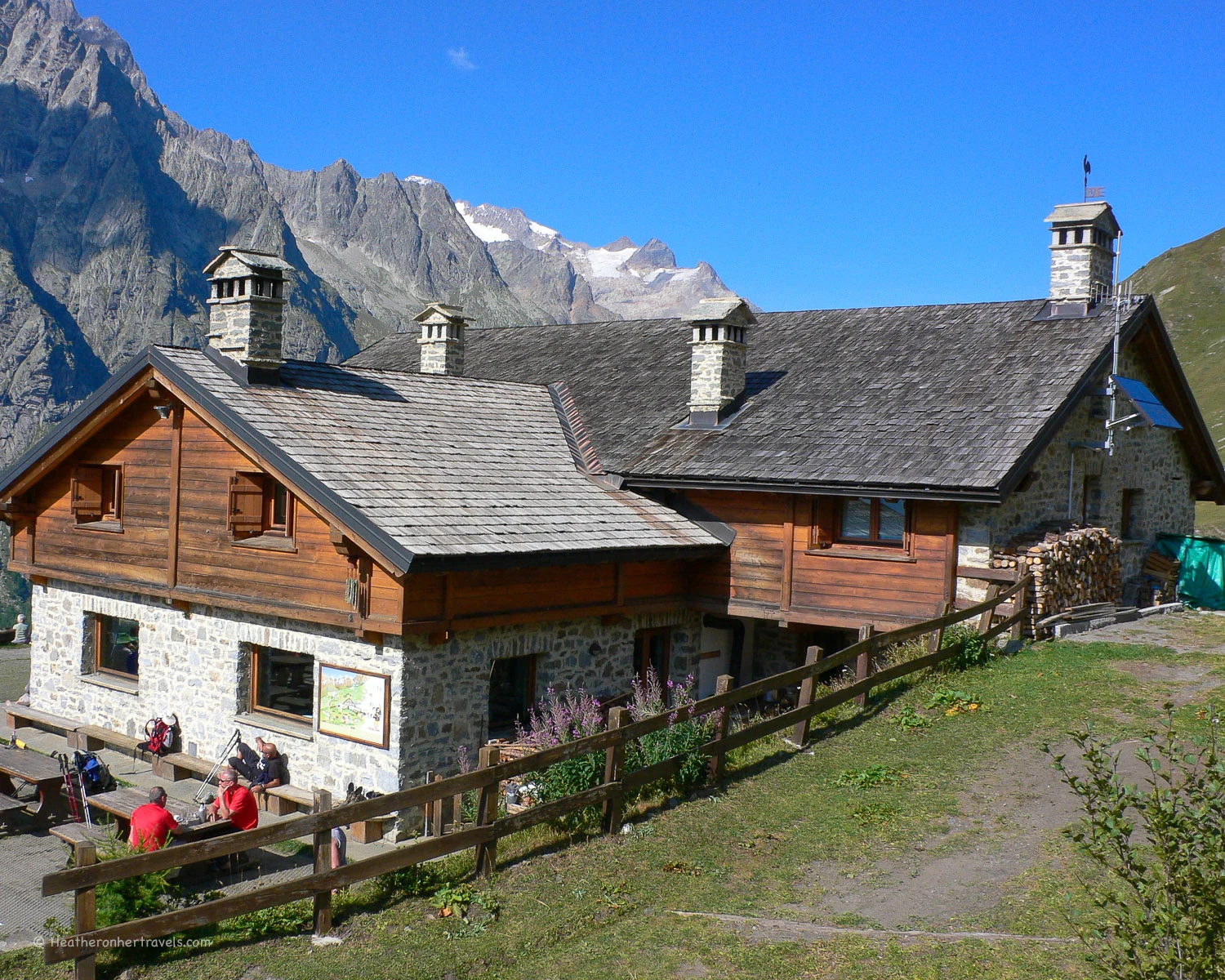
Many of the mountain refuges were pretty basic, some not having a shower. You’ll be popping behind a bush for a call of nature. So, we both had a good supply of wipes to keep both body and hands clean.
Insurance cover for Medical Emergencies
There are parts of the Tour de Mont Blanc that are wild and take you well away from civilization. This is part of the attraction of the walk.
However, you are never more than a few hours walk from a hut or a town or a village in the valley that you could get down to if you had a serious medical emergency. The Tour de Mont Blanc is a strenuous walk in parts. It’s nothing to put you off if you’re generally healthy and with a moderate level of fitness.
Of course, you should have health insurance that covers you in case of a serious medical emergency that would require you to be evacuated from the mountain. If you already have a health insurance policy in place, make sure that you read the small print to check that it covers you for mountain walking.
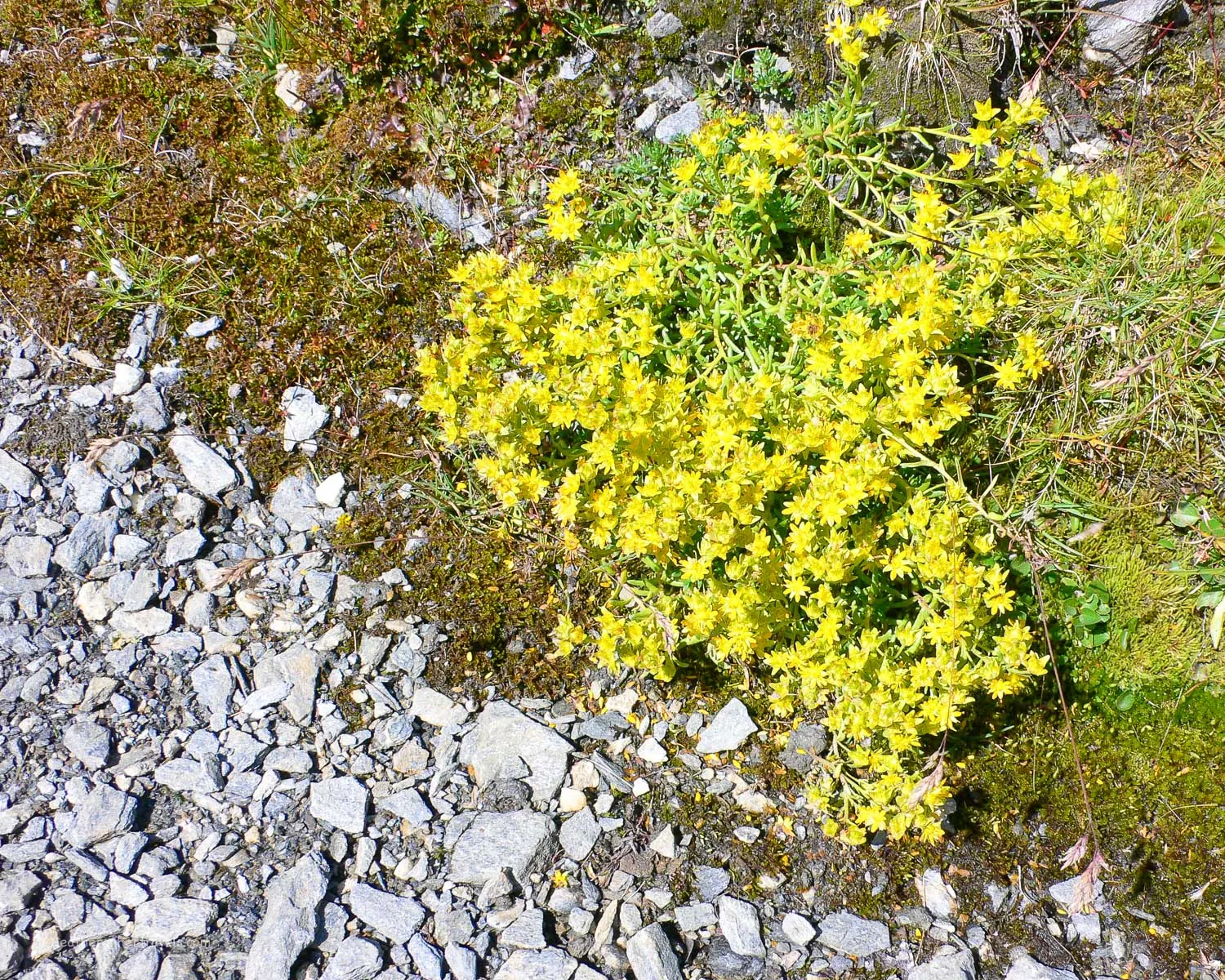
Some policies have an exclusion when you go over a certain height. Check that you are covered for going over 2500m on the Tour de Mont Blanc.
Mitigating health risks
If you are concerned that health risks might affect you, I would make sure that you follow the most popular way of walking which is clockwise. We did our tour anti-clockwise which meant that we were going against the flow.
The clockwise direction is by far the most popular. You will get at all times during the walking season between May and September a steady flow of walkers who would help you get at least to the next refuge if you’re in trouble.
Another mitigation is to build in rest days, especially if you are walking the whole trail of 12 days in one go. The ideal places to build in rest days are the larger towns of Chamonix (France), Champex Lac (Switzerland) and Courmayeur (Italy).
You might also allow a day at the beginning of the trail to acclimatise to the altitude, especially if you plan to cut out some of the uphill walking with cable cars, since this will mean quick changes in altitude.
The Tour de Mont Blanc can be a strenuous walk, but if you are aware of the potential health hazards and take reasonable precautions, you should have an enjoyable trek as we did.
Resources for walking the Tour de Mont Blanc
The Autour du Mont Blanc website has useful information to help you plan your Tour de Mont Blanc walk.
We used the Cicerone Tour of Mont Blanc guide by Kev Reynolds. It’s an excellent guide for both the clockwise and anti-clockwise route. There’s a detailed route guide, maps, accommodation information and points of interest along the route.
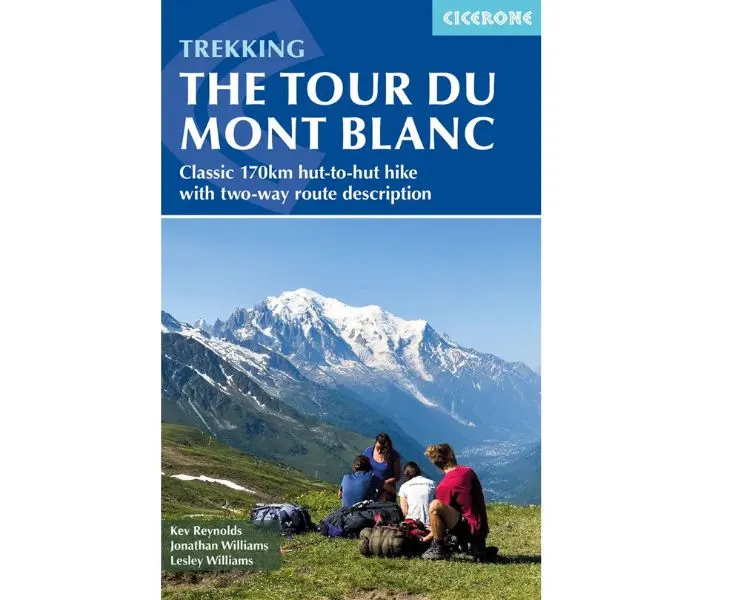
Need a guide book for the Tour de Mont Blanc? We recommend the Cicerone Trekking the Tour of Mont Blanc by Kev Reynolds
Read Next
Read about the mountain clothing you’ll need for trekking the Tour de Mont Blanc
More tales from the Tour de Mont Blanc
Read about the whole walk on the Tour de Mont Blanc, what we saw each day, where to stay and practical tips.
- Tour de Mont Blanc – Day 1 – Les Houches to Refuge la Bellachat
- Tour de Mont Blanc – Day 2 – Refuge de Bellachat to la Flegere
- Tour de Mont Blanc – Day 3 – Refuge Flégère to Lac Blanc
- Tour de Mont Blanc – Day 4 – Flégère to Refuge Col de Balme
- Tour de Mont Blanc – Day 5 – Col de Balme to Champex Lac
- Tour de Mont Blanc – Day 6 – Champex Lac to Ferret
- Tour de Mont Blanc – Day 7 – Ferret to Rifugio Elena
- Tour de Mont Blanc – Day 8 – Rifugio Elena to Rifugio Bonatti
- Tour de Mont Blanc – Day 9 – Rifugio Bonatti to Courmayeur
- Tour de Mont Blanc – Day 10 & 11 – Courmayeur to Chapieux
- Tour de Mont Blanc – Day 12, 13 & 14 – Chapieux to Les Houches
This article is originally published at Heatheronhertravels.com

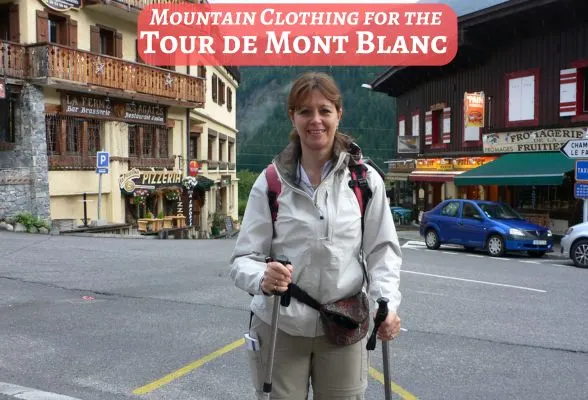

Tim Horgan @ On and Off the Gringo Trail
Monday 1st of July 2013
Wild Europe looks awesome!